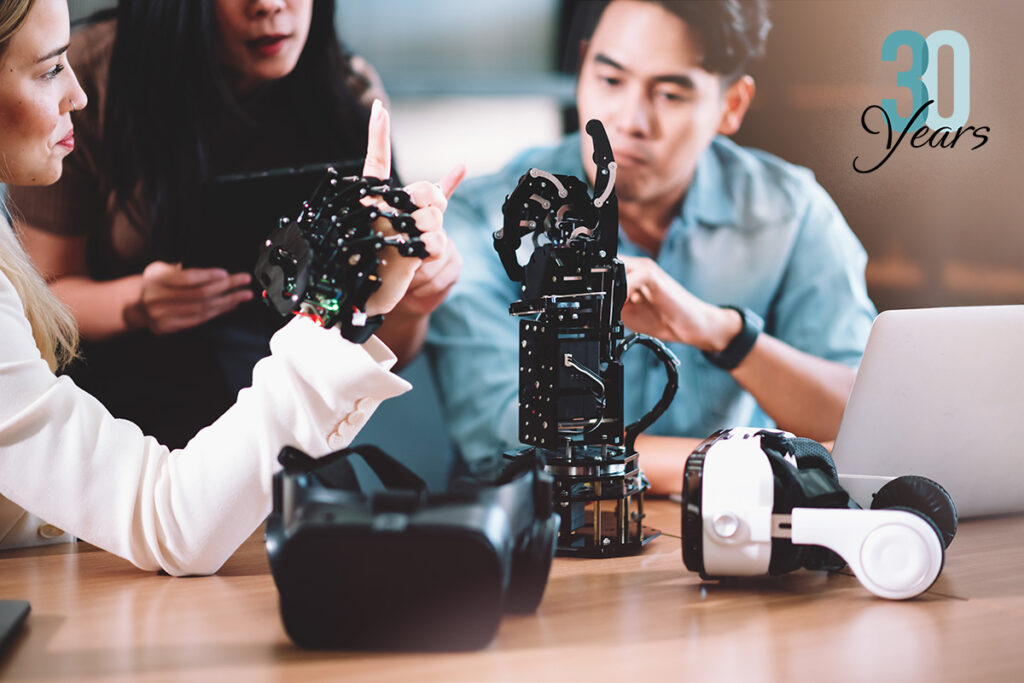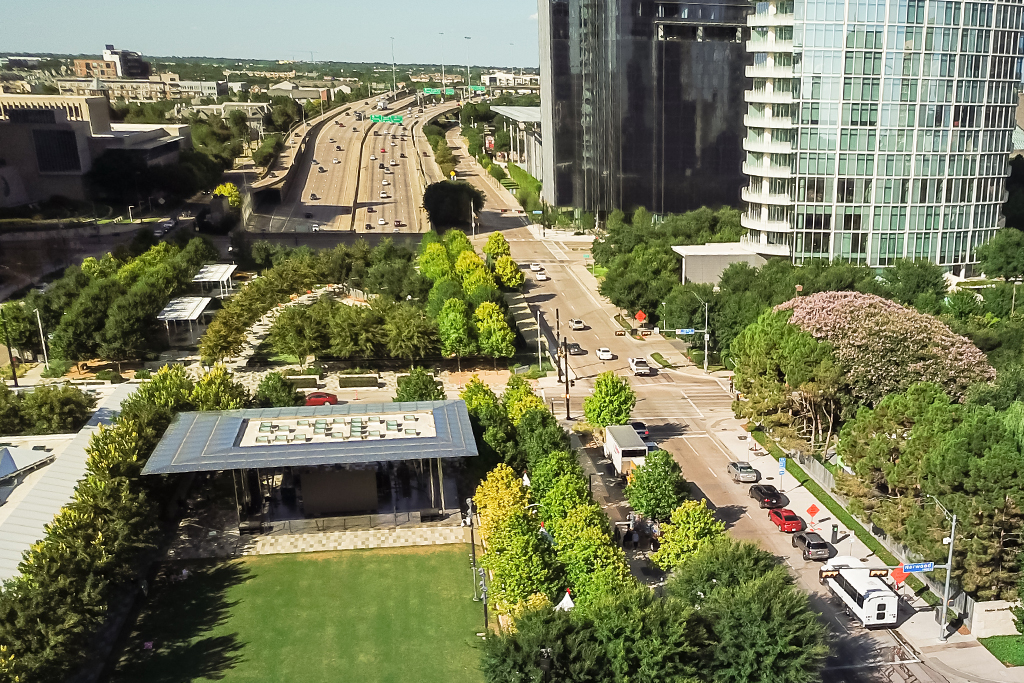As part of our 30-year celebration, this is the second in a four-part series that looks at TIP’s influence on topics that matter in economic and workforce development—and where we see talent, innovation, place, and implementation heading next.
There are certain terms so ubiquitous they are all but devoid of meaning. Innovation certainly comes near the top of that list. But that hasn’t always been the case. TIP began emphasizing the role of innovation in economic development long before it became a buzzword. Our work in Racine, Wisconsin, in collaboration with the IC2 Institute of the University of Texas, dates back 25 years. Along with the Racine County Economic Development Corporation and Johnson Wax—where I had the privilege of meeting with the legendary Sam Johnson—we crafted an innovation-driven plan that was transformative for the community and ultimately influenced economic development throughout the state of Wisconsin.
To be innovative, we argued, means not being beholden to traditional approaches, being willing to try something new, something not obviously thought of before. What that means varies by community and region. At the time, we made the case that to be innovative is not simply to adopt the latest tools or trends, but to approach challenges with fresh thinking and a willingness to break from convention. In the case of Racine, it was the impetus for Johnson Wax to support an innovation center and to share insights into intellectual property.
Innovation in Practice
We’ve advanced that convention-breaking spirit in the decades since.
- TIP was a leader in emphasizing the importance of upstream inputs—such as R&D or design—long before the innovation ecosystem entered the conversation. In places like southeast Wisconsin, we helped communities recognize unseen but powerful assets in their supply chains. In Green Bay, we worked with Schreiber Foods to position the community for up-stream investments and further encouraged innovation by recommending and then supporting the University of Wisconsin-Green Bay in securing a new engineering school.
- More than a decade ago, we began analyzing target industries through an occupational lens, starting with the Puget Sound Regional Council in 2011. That evolution allowed us to better understand the skills and capabilities behind industry trends, helping clients align education, workforce, and business strategies more precisely.
- In Fort Worth, we partnered with Isaac Barchas, the former head of the Austin Technology Incubator and now head of an active venture capital firm, to broaden the city’s understanding of its innovation assets. Our approach went beyond patents and startups to include events, competitions, media coverage, and public awareness as elements that support a thriving innovation culture.
- As the pace of innovation accelerated, it became increasingly clear that traditional industry classification systems like NAICS were out of step with the rapid shifts we were seeing on the ground. In response, TIP introduced a framework for identifying strategic growth areas—clusters defined not by legacy classifications, but by real-time employer demands for skills and talent to support emerging technologies and evolving market dynamics. This shift, formalized around 2019, helped clients prepare for what’s next, not just what’s now.
- TIP’s early efforts to visualize the uneven impacts of COVID-19 on workers led to the creation of our Occupational Risk Tool, which mapped health and economic vulnerabilities by occupation and ZIP Code. This data visualization laid the groundwork for the Job Quality & Access (JQA) tool, which was recently recognized by the American Planning Association for Innovation in Implementation. By analyzing over 700 occupations through the dual lenses of job quality and access—and layering those insights with geographic, demographic, and socioeconomic data—the tool helps communities pinpoint disparities, identify in-demand pathways, and prioritize workforce strategies with clarity and precision.
So, what does it mean to be innovative today? And more importantly, how do economic development organizations (EDOs) embody innovation in ways that are practical, sustainable, and future-focused? The real question for practitioners is not how to define innovation, but how to build the capacity for it. Being innovative requires a distinct skillset and a way of thinking—one that embraces technology and its inherent disruptions and anticipates trends.
1. Embrace Technology
While embracing technology may seem simple, it is anything but. The emergence of generative artificial intelligence (AI) is proving to be as transformative as the internet was 30 years ago. As a profession, we are still mostly paying lip service to this technology, with few of us having successfully incorporated it into our strategic planning. A forward-looking appreciation of the effects of AI on the workforce should be at the forefront of every EDO.
An extensive literature is already available that considers which jobs are most vulnerable to the rise of AI.[1] Opinions range from the cautiously optimistic to the direst of predictions: that every occupation will eventually be at risk. One point of consensus is that occupations in management, professional services, and healthcare—all mainstays of regional economies—are among the most vulnerable. If these sectors are facing disruption, what does that mean for how we recruit, how we train, and how we justify incentives? If we are preparing people for jobs that may not exist in five years, whom are we helping?
To embrace technology is to appreciate that we can no longer assume that our metrics, processes, or tools are those best suited for our communities.
2. Embrace Disruption
Embracing technology should be tied to embracing disruption. It is hard to think of innovation without accepting that a break with tradition is inherently disruptive. The COVID-19 pandemic, now fading in the rear-view mirror, shattered many of the norms we once took for granted. Remote work, the evolution of shopping patterns, the reconfiguration of healthcare delivery—all of these continue to reverberate. Just as the workforce landscape has shifted, so too has the future of Class A office space, industrial parks, and retail centers.
To embrace disruption is to challenge our own notions of what constitutes successful economic development. Asking the hard questions—in the boldest of terms—is a good starting point. What if office development needs a radical rethinking? What if industrial parks need to be completely reconfigured? What if the demand for data centers outstrips our energy resources? To embrace disruption opens the door to a different kind of creative thinking. Should mixed-use developments be a target? Are our industrial parks capable of meeting the needs of high-speed connectivity? Is nuclear power the answer to energy supply? These are questions we are posing to our clients.
3. Anticipate Trends
Alongside embracing technology and disruption, we must commit to anticipating trends. Innovative thinking is, by definition, forward-looking. For a community to be competitive, to be the kind of place where creative people want to settle, leaders need to be looking closely at emerging trends. This is a tricky proposition, but it is doable. A few years back, Texas CEO Magazine asked me to write an article on what Texas would look like in 50 years. An impossible assignment, to be sure. So instead of looking ahead, I looked back. What was going on in the state 50 years ago? And to my surprise, it was clear that the future was already present. Moore’s Law was being discussed (predicting the doubling of computing speed), Dallas companies were advancing chip design, and demographic patterns were changing in ways that predicted explosive urban growth. All that was already there. To anticipate those trends is not about predicting the future; it is about imagining how patterns may unfold.
For our communities to be vibrant and for our businesses to thrive, we will have to embrace innovative thinking into our organizational models. We need to think beyond the next site visit or incentive package. Technology, disruption, and trend spotting are all aspects of what a forward-looking (and forward-acting) EDO must commit to. If this sounds like we should be running a think tank rather than a traditional incentive-driven, industrial-oriented, job-creating shop, well, maybe we need to do just that.
A Call for Futures Thinking
This think-tank approach has served many communities well in the form of a futures council, which has emerged as a mechanism for innovation in cities large and small. Austin and Fort Collins are two such examples, but there are many across the country. In addition to being tech-savvy, these communities look favorably on disruption and are creative when it comes to anticipating trends and positioning themselves to take advantage of these changes. A futures council engages business leaders, academia, and major institutional players. Increasingly, these forums also offer a platform to disadvantaged and marginalized groups and opens wide the door to a younger generation.
Among the strategies that emerge from a future-forward, innovation-driven plan are entirely different recruitment targets (not driven primarily by job growth), a public sector commitment to climate resiliency, and a rethinking of the relationship between the public sector and the business community.
[1] For example, in 2023, McKinsey & Company projected that business and legal jobs will be especially vulnerable to generative AI. Gary Grossman, writing somewhat whimsically in Venture Beat, assumes that all knowledge workers will need to rethink what the human element of their job will be. And Allison J. Pugh’s The Last Human Job: The Work of Connecting in a Disconnected World takes a similar but more detailed perspective on what we, as humans, have to offer in the world of work.



